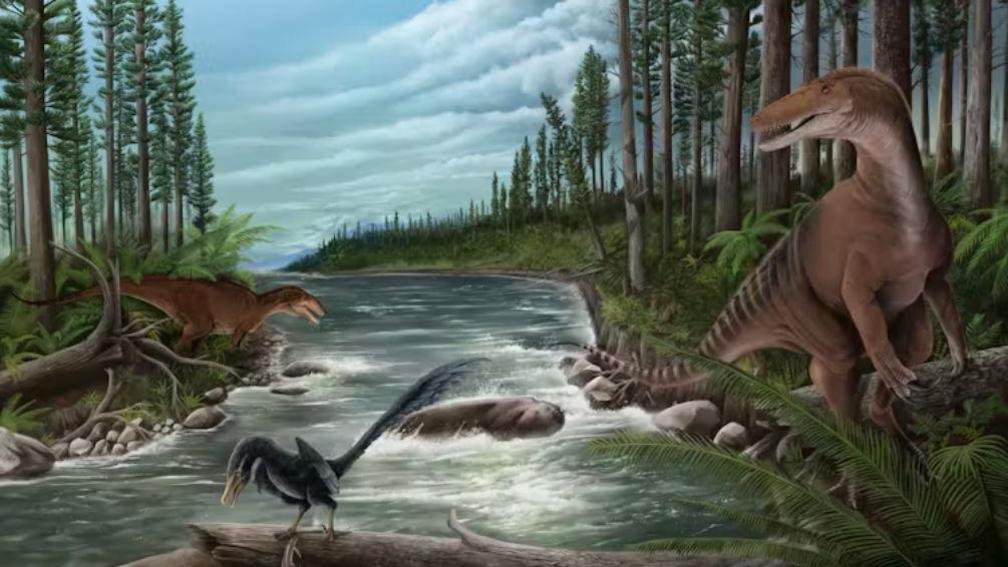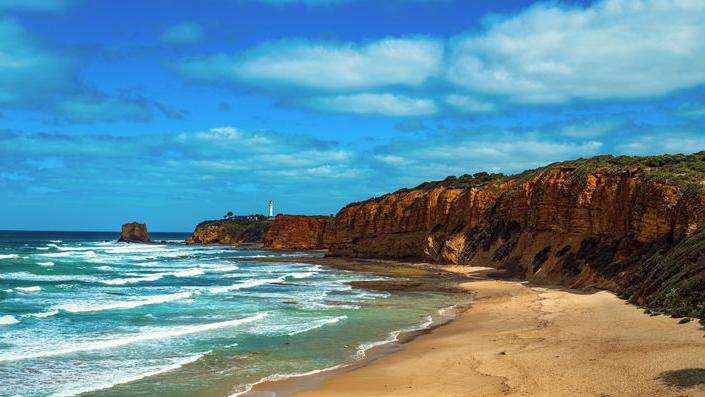World's oldest megaraptor species discovered in Australia

- Published
Experts in Australia have discovered a number of new species of dinosaurs whose fossils were found in the southern state of Victoria.
They include the world's oldest megaraptor and the first known example of a carcharodontosaurus - a huge theropod dinosaur - in Australia.
Scientists say it shows that meat-eating dinosaurs thrived in the country around 120 million years ago.
Researchers also believe their findings reveal similarities between Australian and South American dinosaurs during the Cretaceous period.
More like this
- Published11 February
- Published27 January
- Published24 January
What did scientists find?

The fossils were discovered on Victoria's coastline in Australia
A group of scientists including experts from Museums Victoria in Australia say that more than 250 dinosaur bones were found in total - and that they have now identified five fossils of particular importance.
These include two shinbones which provide the first evidence of carcharodontosaurs (whose name means "shark-toothed lizard") in Australia.
These were very large meat-eating dinosaur, reaching over 12m in height, which had tall and narrow snouts fitted with blade-like teeth.
Another shinbone showed the presence of unenlagiinae - a type of dromaeosaur which had long snouts.
Researchers also discovered a fourth shinbone and two tail vertebrae, which are from a megaraptorid, one of Australia's largest-known carnivorous dinosaurs.
Experts say the newly described fossils show evidence that a number of different meat-eating dinosaurs seen in South America also roamed south-eastern Australia during the Cretaceous period.
This is because a supercontinent called Gondwana joined Australia to Antarctica and South America at that time.
